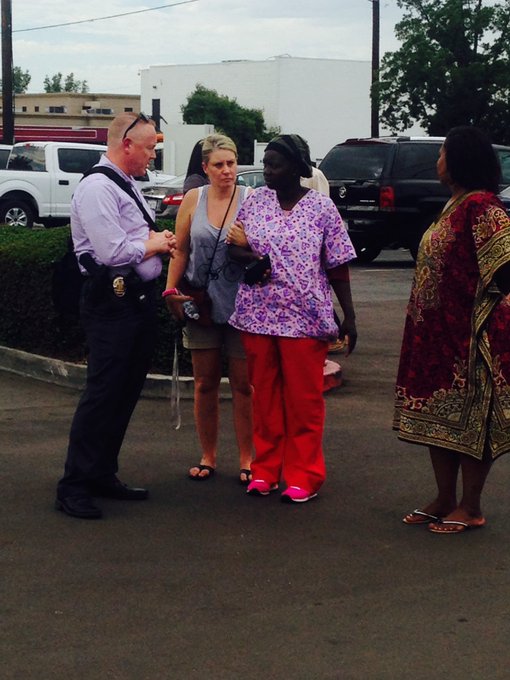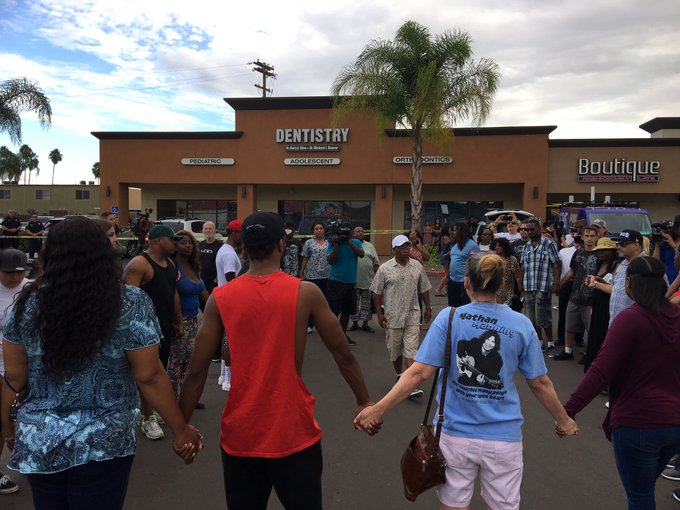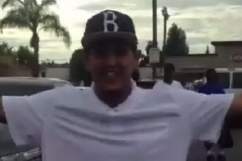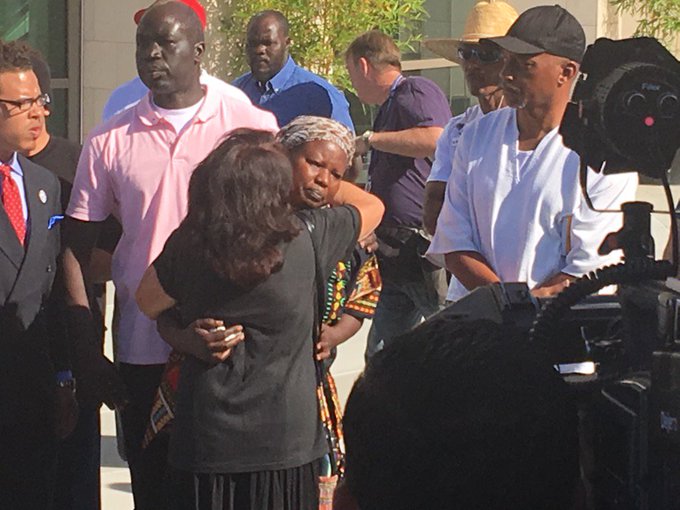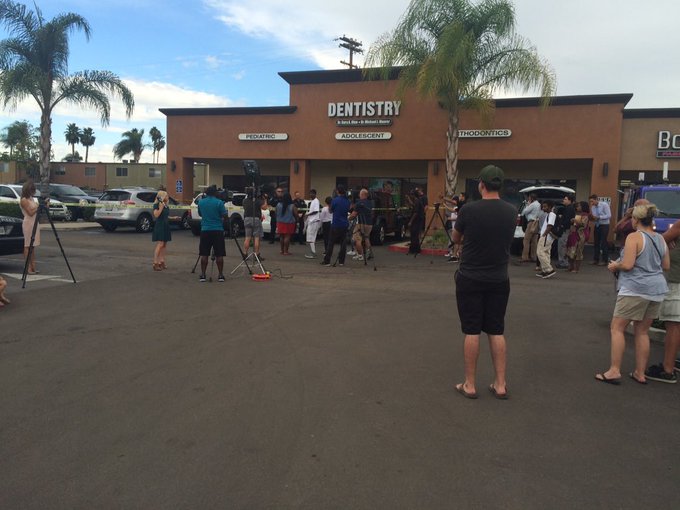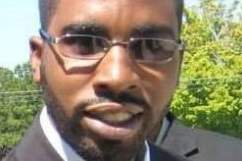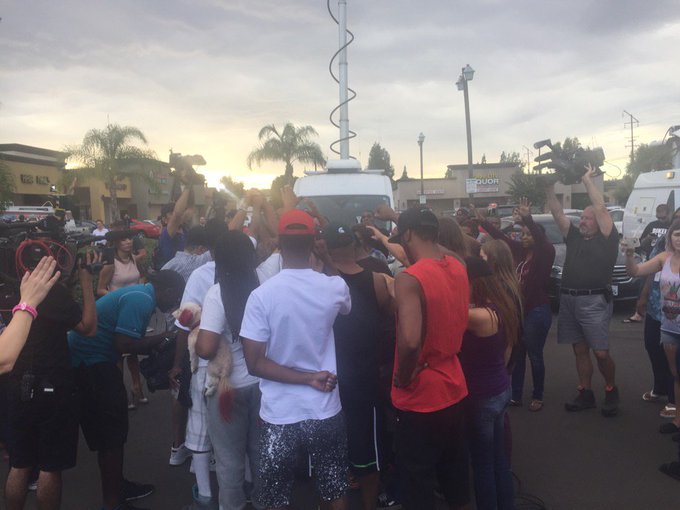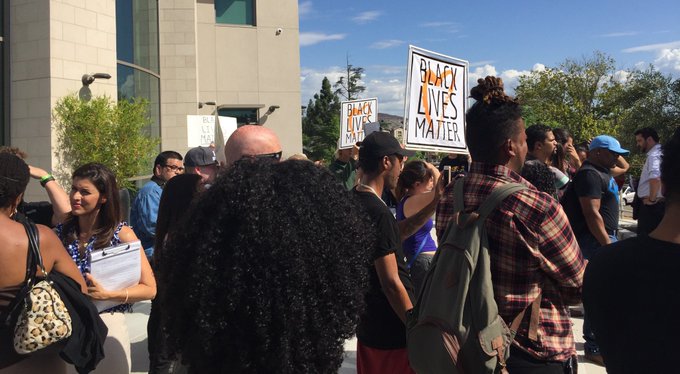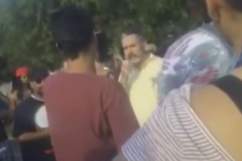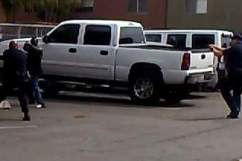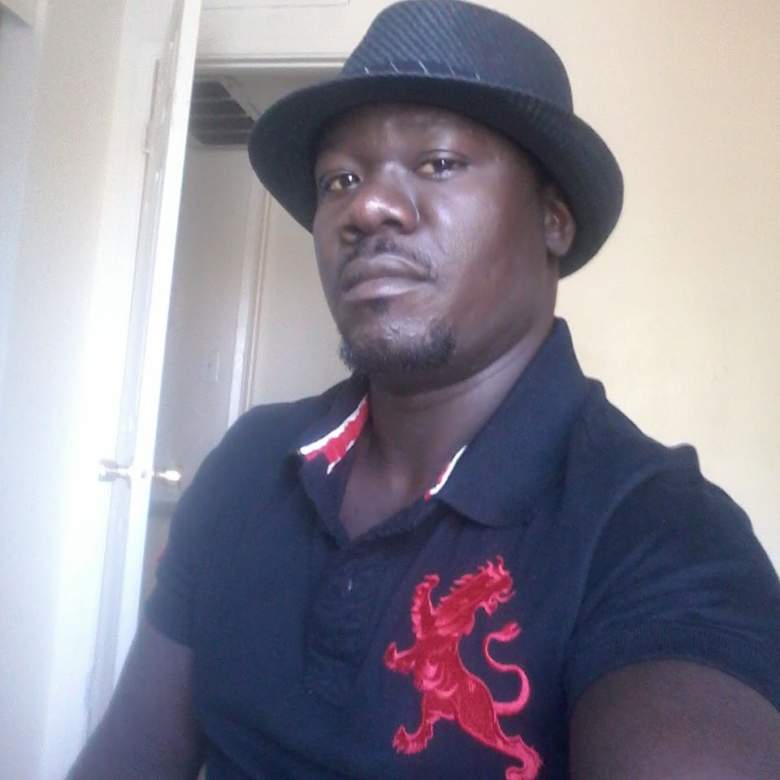
Alfred Olango (Facebook)
Alfred Olango, a father and refugee who fled political persecution in Uganda, was shot and killed by an El Cajon, California police officer, and eyewitnesses claim he was unarmed and pleaded with officers not to shoot him.
Police confirm Olango, a furniture worker, had no firearm, but they say he assumed a shooting stance, pointing what turned out to be a vape electronic device at the officer who shot him.
Olango’s name began to trend on social media after the man’s grief-stricken sister gave his name in a dramatic Facebook Live video that streamed the shooting’s immediate aftermath, and his identity was officially confirmed by police on September 28. The sister had called police to the scene in the first place; the 38-year-old man was wandering in traffic when police arrived. Police released a still shot from a citizen video of the shooting, but the attorney for Olango’s attorney has demanded they release the whole thing, which they then did.
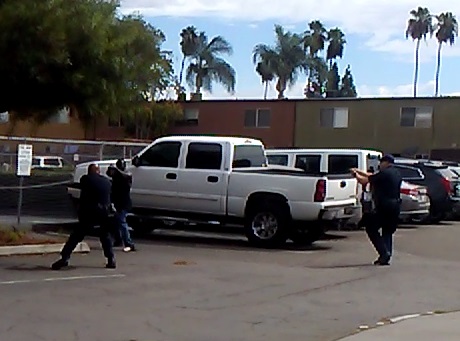
The picture that was released of the shooting by El Cajon Police Department.
Police said in a news release, “The object that Mr. Olango drew from his pant pocket and pointed at the officer is a vape smoking device. The vape has an all silver cylinder (Smok TFV4 MINI) that is approximately 1” diameter and 3” long that was pointed toward the officer. The box of the vape that was held in his grip, is 4” x 2 1/4”s x 1” (Pioneer for You Vape).The vape was collected as evidence from the scene.”
The shooting has become the recent flash point in tensions between American police and some in the community, and it comes on the heels of police shootings in Tulsa and Charlotte that provoked controversy. Protests in El Cajon, which is a suburb of San Diego, continued Wednesday night.
One of the officers at the scene was identified by the mayor as Richard Gonsalves, who was previously accused of sexual harassment.
On September 30, police released the full citizen video of the shooting. They also identified Gonsalves as the officer who shot Olango. Watch the video here and learn more about Gonsalves here.
The Facebook Live video is dominated by the woman’s emotional upset as she demands to know why police shot her brother. The video is emotionally disturbing and contains graphic language (you can watch it below in the next section). It captured the scene’s aftermath but not the actual shooting.
Witnesses demonstrated in video-taped interviews disseminated on social media how they say an unarmed Olango had both of his arms extended outward when he was shot and begged police not to shoot him. However, police have said on Twitter that the man did not have his hands in the air as they try to push back at the eyewitness accounts circulating widely on Twitter and sparking outrage, including at the scene.
“The truth will come out,” police said in the news conference. At some points during the news conference, you could hear a raucous crowd yell and swear at police.
Here’s what you need to know:
1. Olango’s Upset Sister Says She Asked Police to Help Him & People Who Knew Him Described Him as a Caring Man ‘Everyone Got Along With’
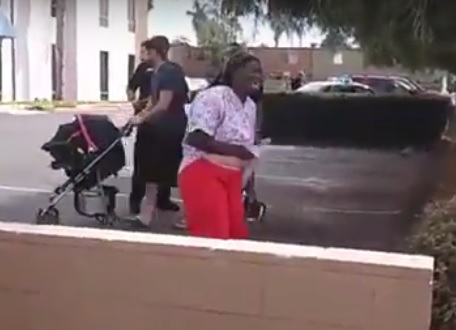
A screenshot from the Facebook Live video of the sister at the scene. (Facebook)
The dramatic Facebook stream has had more than 22,000 views and is somewhat reminiscent of the Facebook Live video created by the daughter of Keith Lamont Scott, the black man whose police shooting death sparked riots and protests in Charlotte, North Carolina.
The sister, identified as Lucy Peterson, had called police to the scene to get help for her brother who was not acting like himself, police said. Police confirmed, in the news conference, that the sister informed them in her first 911 call that the man was unarmed and mentally ill. NBC 7 quoted Peterson as saying she called police because Olango was “mentally perturbed and he needed help.”
Olango’s mother told Reuters she believes he was having a mental breakdown.
You can watch the Facebook Live video on the shooting’s immediate aftermath here:
“I called you to help me but you killed my brother….Why couldn’t you guys tase him? Why why why why?” the sister says, according to NBC 7 San Diego. Police said they want the woman to contact them; in the news conference, they said they would not confirm that the man had died until that point. However, in a news release issued a short time later, they confirmed that the man had passed away.
“I called you guys to come help me and you killed my brother,” the sister wails in a cacophony of grief to the police at the scene. “You guys killed my brother!”
Police revealed in the news conference that it took them 50 minutes to respond to the sister’s 911 call, although it was unclear whether she called one time or as many as three.
Olango was also a father. A woman wrote on Facebook, “Alfred was a good man a great father to my son may he rest in peace taj and I will miss you. We love you so much.”
Tashia Braxton told Heavy that Olango was “Very funny loving caring for others great step father to my child a big support system for others when needed outstanding worker someone that everyone got along with I would love him to the day I die.”
She said she also wanted people to remember of Olango the following: “He was a great man, and a good stepfather to my son Taj Hightower. We are so very sad.”
The Facebook Live video is wrenching and dramatic.
“The police did it again, you all. They shot another unarmed black person as usual,” says Rumbie Mubaiwa, who streamed the Facebook Live video. It also captures police still trying to gather information, including the man’s name and eyewitness accounts.
“And the lady is saying she called them for help… and they shot her brother,” the narrator says, referring to the man’s sister. At one point, Mubaiwa challenges police directly, accusing them of lacking compassion for the shot man’s sister.
Olango was taken to the hospital, said CBS 8.
2. Police Claimed Olango Was Acting in an ‘Erratic’ Fashion & Olango Had a Criminal History
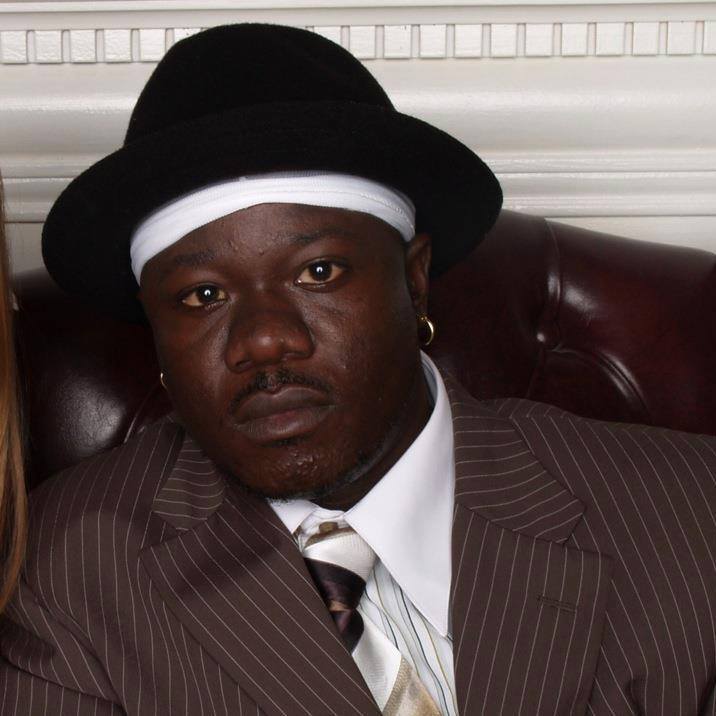
Alfred Olango. (Facebook)
Tucson.com said Olango “was distraught over the recent death of his best friend and was having an emotional breakdown.”
The newspaper added that Olango had past “brushes with the law, including selling cocaine, driving drunk and illegally possessing a 9mm semi-automatic handgun.”
Authorities twice tried to deport Olango, but Uganda wouldn’t take him back and he stopped reporting to authorities, said NBC San Diego.
The family’s lawyer wants police to release the full citizen video, said Tucson.com. The San Diego Union-Tribune said Olango’s record included time in federal prison for being a felon in possession of a firearm.
Police alleged that Olango was acting in an “erratic” manner. Police deny the man had his hands in the air; they have a mobile phone video of the shooting they have not released publicly, said NBC 7 San Diego, which quoted another eyewitness as saying the man “refused to remove his arms from his side.”
In a news conference, police said they found no weapon at the scene; they had responded to 911 calls from the man’s sister and found him walking in traffic. They also painted a more complicated picture than witnesses, though, saying the man concealed his hand in his pants pocket, paced back and forth, and then rapidly drew an “object” from his pants pocket and extended it rapidly toward an officer, taking “what appeared to be a shooting stance, putting the object in the officer’s face.”
Watch the police news conference here:
At that time, an officer fired a taser and a second officer, the one who had the object pointed at him, fired his weapon, striking the man, police said. However, police would not identify the object (one News10 account from an eyewitness said it might have been a vapor device, but this was not confirmed). Both officers have over 21 years of service as police officers, police said.
“The male refused multiple instructions by the first officer at the scene and concealed his hand in his pants pocket,” police said in the news conference.
At one point in the incident, an officer deployed a taser but, said the police, “the male rapidly drew an object, placed both hands extended, and took what appeared to be a shooting stance, putting the object in the officer’s face.”
Police contended that the man didn’t follow their orders after they responded to three radio calls to the scene near a restaurant and shopping center intersection, according to The New York Daily News.
Fox 5 San Diego said “the involved officers were responding to a report of an uncooperative person walking in traffic,” according to police.
3. Eyewitnesses Say Olango Had His Hands out When He Was Shot & Pleaded Not to Be Shot
In the video above, eyewitnesses stretch their arms out to demonstrate what they say were Olango’s last moments. They insisted all along that the shot man was unarmed and had his hands extended out when the officer fired. Police have not released any other frames from the citizen video they have of the shooting, which could clear up the positioning of his arms or confirm it.
“He was like this, don’t shoot, don’t shoot and they still shot him,” said one of the witnesses in the above video, with his arms extended.
“I see a man, I see a black man surrounded by officers with their guns out… black man with his hands up …he’s jerking, he’s confused, he runs this way,” said one eyewitness interviewed by an NBC15 reporter. “As soon as he runs this way, they discharge boom, boom, boom… five shots.”
You can watch the accounts of other eyewitnesses here:
The dramatic accounts spread quickly on social media, helping to fuel the unrest. 10News said one witness said the shot man “was having a seizure.” Witnesses reported hearing five shots, said the TV station.
Fox 5 said a witness said the man had mental health issues. Police said there was no indication the man was under the influence of anything and added that they don’t have evidence he was having a seizure.
Police said in a news release that the man “was walking in traffic, not only endangering himself, but motorists. Two officers located him behind a local restaurant in the 800 block of Broadway. The subject was described as an adult African American male in his 30’s, wearing a black tank top and blue jeans.”
4. Olango Came to America When He Was a Child After Time in Refugee Camps
One friend wrote on Facebook, “RIP TO ONE OF MY BEST FRIENDS Alfred Olango WHO WAS BRUTALLY SHOT BY POLICE YESTERDAY IN EL CAJON…MY HEART IS REALLY HEAVY AND HURTING RIGHT NOW… MY BOSS KNEW I WAS GOING THROUGH SOMETHING TODAY AT WORK AND SO HE HAD NO CHOICE BUT TO LET ME GO HOME BECAUSE MY MIND JUST WASN’T THERE…I LOVE YOU BIG BRO AND I MISS YOU..”
Olango’s Facebook page says he was “Head Cook at West Coast Hooters, Head Cook at Hooters” and formerly “Head Cook at Saddle Ranch – Westgate.” He also wrote, “Former God’s Servant at Jesus Daily.” However, NBC 7 said Olango worked at a furniture store and had an “extensive criminal history.”
He wrote that he had studied at San Diego Mesa College, went to San Diego High School, lives in San Diego, California, was single, and was from Gulu, Uganda.
According to NBC 7, Olango “came to the U.S. at the age of 12 in search of protection from a regime seeking to kill his entire family.”
The San Diego Union Tribune says Olango’s feet were scarred because he had to walk without shoes during his time in refugee camps. The newspaper added that he was working as a cook.
He leaves behind a large family, and shared photos on Facebook of himself with small children.
According to NBC 7 San Diego, “One witness at a local restaurant told NBC 7 police came and confiscated their cell phones following the incident; another witness recalled hearing an officer fire three or four rounds.”
On Twitter, police denied they confiscated any cell phones.
Police said that one person voluntarily turned over a cell phone with a video, said CBS8.
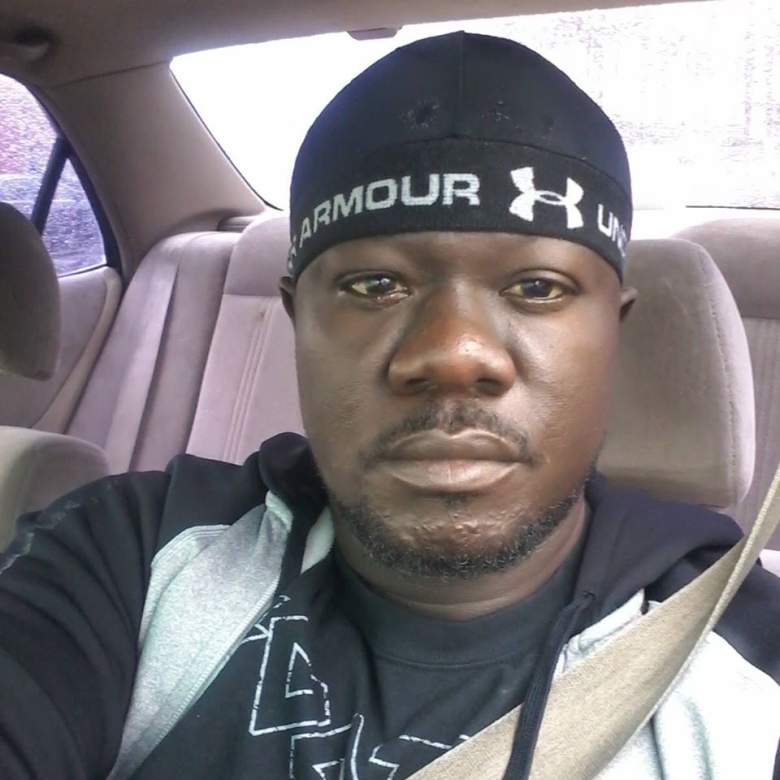
Alfred Olango. (Facebook)
The ACLU of San Diego released a statement saying facts were still coming in but adding, “Unfortunately, there are disturbing reports from a number of witnesses that police officers confiscated cell phones from people who witnessed the shooting. Confiscating cell phones is a violation of the Fourth Amendment (unreasonable seizure without warrant or exigent circumstance) and the First Amendment (interference with the right to record in public) under the U.S. Constitution and analogous rights under the California Constitution.”
However, in their news release, police said, “While detectives where on scene investigating the officer involved shooting, a witness came forward and notified officers they had video footage of the incident. That witness voluntarily provided their phone to the police department and gave written consent for the officers to view the video. Investigators have been able to download the video. This was the only phone provided to officers in this investigation. No other phones were taken from witnesses.”
The San Diego Union Tribune said that El Cajon police do not have body cameras.
Police said they were investigating whether Olango was mentally ill or having a mental health crisis of some kind.
5. Anger Was Brewing at the Scene of the Shooting, Where People Yelled ‘Don’t Shoot’ at Police
People were streaming live on Facebook from the scene, which was growing more chaotic as irate people gathered and shouted at police officers. At one point, protesters stormed the police tape at the scene.
Anger was also growing on Twitter, where Olango’s name quickly became a hashtag.
Police were chanting “hands up, don’t shoot” at police officers at the scene.
You can click to watch news coverage from the scene here:
The protests were also occurring on Wednesday.
